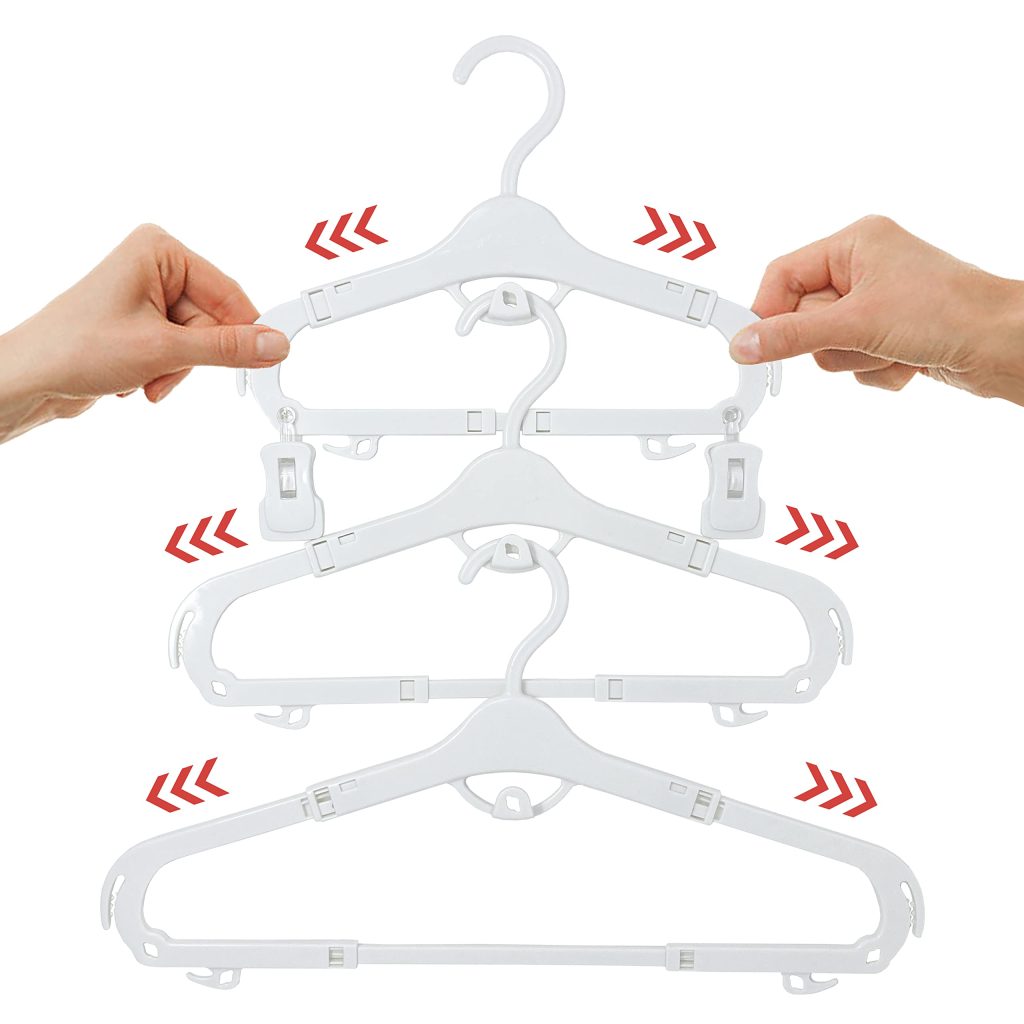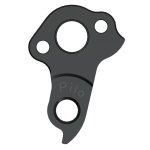Introduction
Standard hanger size – Closet organization is an art that not only enhances the visual appeal of your living space but also maximizes storage efficiency and simplifies daily routines. A key aspect of achieving this harmony lies in understanding and implementing standard hanger size specifications. Properly sized hangers ensure that your clothes maintain their shape, reduce wrinkles, and make the most of available closet space. In this comprehensive guide, we delve into the essential dimensions, materials, and types of hangers to help you streamline your closet organization.

Understanding Hanger Sizes
Hangers come in various sizes designed to accommodate different types of garments. Familiarizing yourself with these standard sizes can significantly improve how your wardrobe is displayed and preserved.
- Standard Adult Hanger:
- Dimensions: Approximately 17-18 inches in width and 9-10 inches in height.
- Purpose: Suitable for most shirts, blouses, and jackets. The shoulder width prevents garments from slipping off and helps maintain their form.
- Slimline Hanger:
- Dimensions: Around 15-16 inches in width and 7-8 inches in height.
- Purpose: Space-saving alternative for lighter garments like tank tops, camisoles, and thin sweaters. Slimline hangers often feature notches to hold straps in place.
- Suit Hanger:
- Dimensions: Wider than standard hangers, typically around 20 inches in width, with a contoured design.
- Purpose: Specifically designed for suits, jackets, and coats to preserve the natural shoulder shape of the garment. Often includes a bar for hanging pants.
- Children’s Hangers:
- Dimensions: Vary based on age groups but generally smaller than adult hangers, starting from about 11 inches in width for toddlers up to 15 inches for青少年.
- Purpose: Tailored to fit children’s clothing sizes, ensuring a secure fit without stretching or damaging the fabric.
- Accessory Hangers:
- Dimensions: Highly variable depending on the item they’re designed to hold, such as belt hangers, scarf organizers, or jewelry hangers.
- Purpose: Specialized hangers for organizing accessories efficiently, often featuring hooks, loops, or multiple tiers.
Material Considerations
The material of a hanger affects not only its durability but also its compatibility with different types of fabrics. Here are some common hanger materials:
- Wood: Classic and sturdy, wood hangers provide excellent support for heavy garments. They are particularly suited for suits and coats due to their weight-bearing capacity.
- Metal: Lightweight yet strong, metal hangers are ideal for heavier items like coats or jeans. Some may have padding or vinyl coating to prevent slipping and protect delicate fabrics.
- Plastic: Economical and versatile, plastic hangers come in various shapes and sizes. They are perfect for everyday use but may not be as durable or gentle on delicate fabrics as other materials.
- Velvet/Flocked: Known for their anti-slip properties, velvet hangers are great for slippery materials like silk or satin. They are slimline, saving space while keeping clothes securely in place.
Maximizing Closet Space with Hangers
To optimize your closet organization using standard hanger sizes, consider the following tips:
- Uniformity: Using hangers of consistent size and style creates a clean, organized look and maximizes space utilization.
- Measurement & Planning: Before purchasing hangers, measure your closet rod’s diameter and depth to ensure the hangers will fit comfortably. Also, calculate the number of hangers needed based on your wardrobe size.
- Layering & Tiering: Utilize cascading hooks or multi-tier hangers to double or triple hanging space for items like skirts, pants, or scarves.
- Adjustable Systems: Consider installing an adjustable closet system that allows you to customize the height between shelves and rods, making room for longer garments or additional hanging levels.

Types of Hangers
a. Shirt Hangers:
- Width: Approximately 17 inches wide.
- Description: These hangers typically have a curved shape to maintain the shoulders of shirts and blouses.
b. Suit Hangers:
- Width: About 18 inches wide.
- Description: These broader hangers support the structure of suits, jackets, and blazers, preventing shoulder bumps.
c. Skirt Hangers:
- Length: Around 14 inches.
- Description: Designed with clips or adjustable clamps to hold skirts and pants securely without creasing.
d. Pants Hangers:
- Width: Typically around 14 inches.
- Description: Features clips or bars to hang trousers and jeans neatly, minimizing wrinkles.
e. Coat Hangers:
- Width: Approximately 19 inches wide.
- Description: Heavy-duty hangers designed to support the weight of coats and heavy outerwear, preventing stretching.
f. Children’s Hangers:
- Size: Smaller dimensions suitable for children’s clothing.
- Description: Often feature adjustable clips or bars to accommodate smaller garments.
Materials and Features
a. Plastic Hangers:
- Lightweight and affordable, suitable for everyday use.
- Come in various colors and styles but may not be suitable for heavy garments.
b. Wooden Hangers:
- Durable and stylish, ideal for suits, coats, and heavy garments.
- Prevents creasing and maintains the shape of clothes.
c. Velvet Hangers:
- Soft, non-slip surface prevents clothes from slipping off.
- Ideal for delicate garments and items prone to sliding.
d. Padded Hangers:
- Covered with fabric or padding to prevent delicate fabrics from snagging or stretching.
Choosing the Right Hanger
a. Consider Clothing Type:
- Match the hanger to the type of clothing to ensure proper support and prevention of wrinkles.
b. Closet Space:
- Opt for slimline hangers or those with cascading hooks to maximize closet space.
c. Durability:
- Invest in sturdy hangers for heavy garments to prevent bending or breaking.
d. Non-Slip Features:
- Choose hangers with non-slip surfaces for silky or delicate fabrics to prevent items from slipping off.
Organizational Tips
a. Group by Type:
- Organize clothes by type (shirts, pants, jackets) to streamline your dressing routine.
b. Color Coding:
- Arrange clothes by color for a visually appealing and organized closet.
c. Utilize Accessories:
- Use accessory hangers for belts, scarves, and ties to keep them easily accessible.
Maintenance
a. Rotate Clothing:
- Rotate seasonal clothing to keep your closet tidy and make the most of available space.
b. Check Hangers Regularly:
- Replace worn or broken hangers to maintain the integrity of your clothing.
c. Air Out Garments:
- Periodically air out clothes to prevent musty odors and maintain freshness.
![]()
Specialty Hangers for Enhanced Closet Compatibility
While universal hangers serve as a solid foundation, incorporating specialty hangers enhances overall closet organization:
- Skirt/Pant Hangers: Equipped with clips or bars, these keep skirts and pants neatly hung without folding or creasing.
- Slimline Hangers: Perfect for maximizing closet space, these ultra-thin hangers often feature notches to secure strapped garments.
- Sweater/Knitwear Hangers: Wide, flat designs prevent stretching and distortion common with hanging heavy or delicate knits.
Measuring for Closet Compatibility
To ensure your hangers fit seamlessly:
- Measure Closet Rod Diameter: Most rods are either 1 1/4 or 1 5/8 inches in diameter. Verify this to select hangers with appropriately fitting hooks.
- Consider Rod Height and Depth: Adequate rod spacing allows clothes to hang freely without touching the floor or crowding each other.
Customizing Your Closet for Optimal Compatibility
For ultimate customization:
- Adjustable Rods: If possible, install adjustable closet systems to cater to varying garment lengths.
- Hanging Organizers: Utilize vertical space with hanging shelves or cubbies for folded items, shoes, and accessories.
![]()
Understanding the Basics
Before delving into specifics, it’s crucial to recognize that a ‘universal’ clothes hanger typically refers to those designed to accommodate a wide range of clothing sizes and types. These hangers usually measure around 17 to 18 inches in length, with a width that comfortably supports various shoulder widths without causing stretching or sagging.
- Standard Width: A standard adult hanger measures approximately 0.25 to 0.5 inches in thickness, striking a balance between sturdiness and space efficiency.
- Material Matters: Common materials include plastic, wood, and metal, each with its own benefits. For example, wooden hangers offer elegance and durability, while slimline velvet hangers conserve space.
The Importance of Shoulder Shape
Shoulder shape is a key factor in hanger compatibility. Broad, slightly curved shoulders mimic human anatomy, preventing creases and maintaining garment shape, especially for suits, jackets, and delicate blouses.
- Avoiding Shoulder Bumps: Wire hangers, notorious for creating unsightly bumps in shoulders, are best reserved for temporary use or dry cleaning.
Conclusion
Implementing standard hanger size specifications in your closet organization strategy not only elevates the aesthetics of your space but also safeguards the longevity and integrity of your clothing. By understanding the dimensions, selecting appropriate materials, and adopting smart organizing techniques, you can transform your closet into a functional and visually pleasing haven. Remember, the right hangers are an investment in both your wardrobe and your daily routine’s ease and efficiency.


